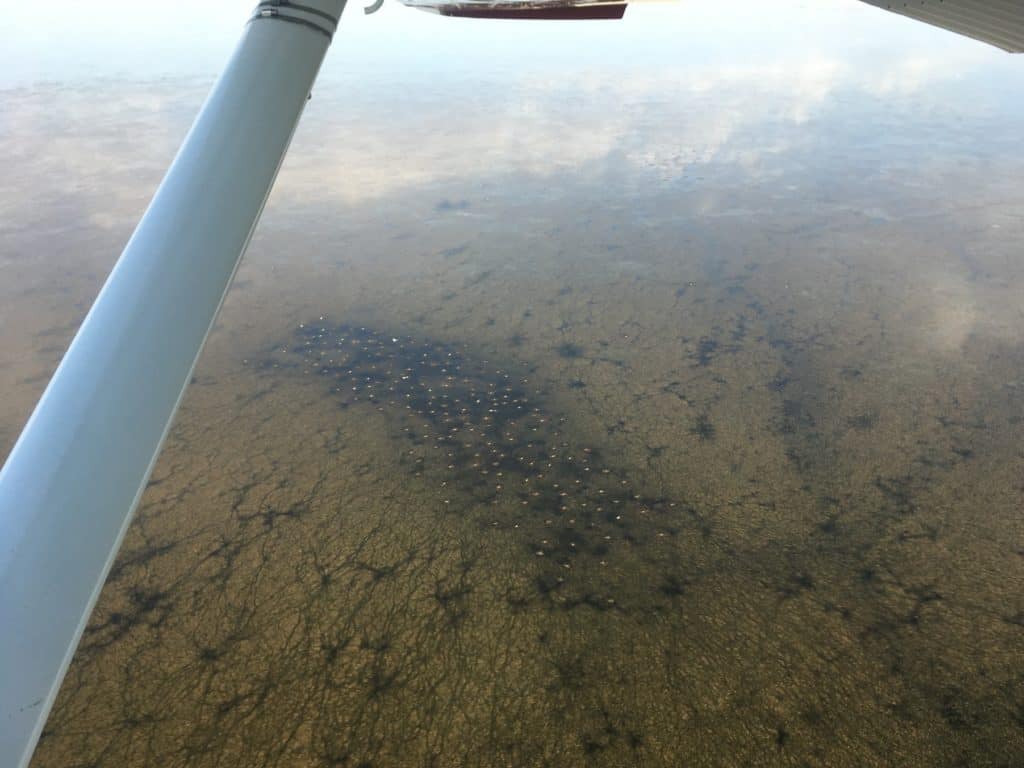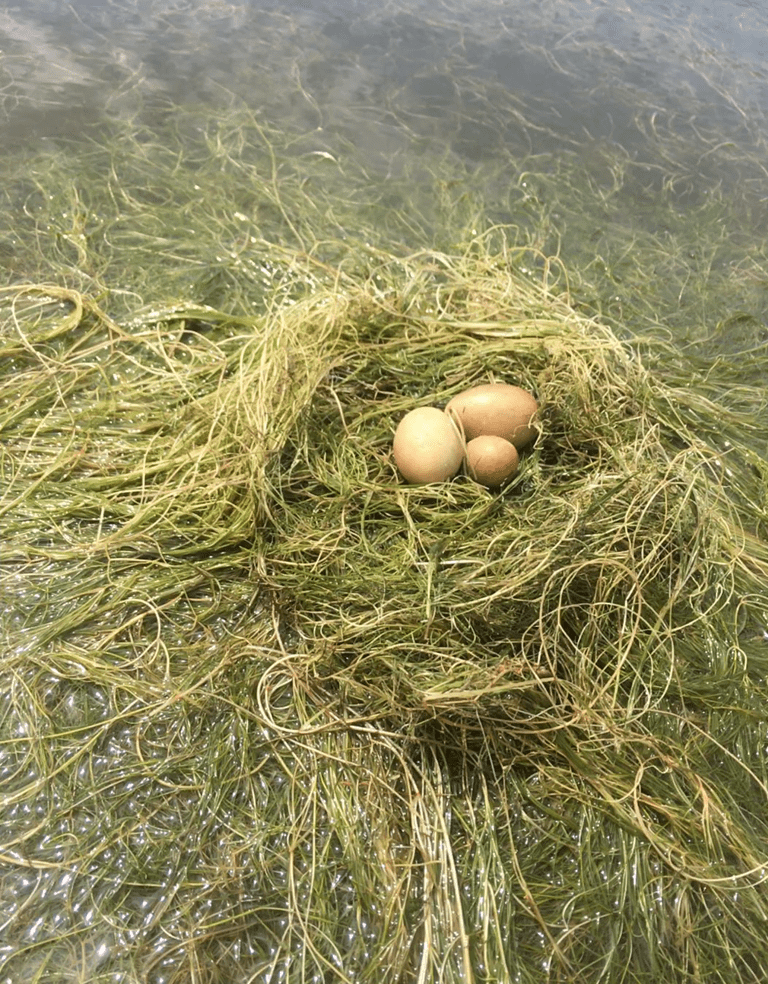Share this article
WSB: Evaluating the needs of breeding grebes in Utah
Every fall, thousands of eared grebes stop along the Great Salt Lake to feed on brine shrimp, which provides nutrients to carry them through a long journey southward to the Gulf of California. Most of the birds are merely passing visitors on their way from the Canadian wetlands where they breed in the summer. But some of the waterbirds stay in the lake’s nearby wetlands to breed.
Nearly all research on breeding habits of eared grebes is done in their Canadian breeding grounds. But Leah Delahoussaye, a biologist with the U.S. Fish and Wildlife Service, wanted to learn more about the habitat needs of eared grebes (Podiceps nigricollis) that breed in the wetlands surrounding the Great Salt Lake in Utah to better inform conservation of the southernmost breeding population of the waterbirds.
“To provide managers with best management practices for eared grebes along the Great Salt Lake, we wanted to know what they were using,” said Delahoussaye, who was a master’s student at Utah State University at the time of the research.
Lead author Delahoussaye and the co-authors of the study published recently in the Wildlife Society Bulletin began monitoring breeding areas in wildlife management wetlands around Great Salt Lake in May 2018, just before the start of the breeding season. They observed nests through August when nearly all chicks had fledged that year and in 2019.
Eared grebes normally form large colonies, making nests close to one another in wetlands. “Colonies can range from 10 nests to 1,000 nests—it all depends on whether or not the habitat is there for them and how large that area is,” Delahoussaye said.

Eared grebes tend to nest in large colonies. Credit: Leah Delahoussaye
In Canada, most eared grebes bend down bulrushes, tall plants that grow in the water, and make their nests directly on top of the vegetation. But the Utah breeding grounds lack bulrushes in areas that would provide refuge for nesting grebes.
Delahoussaye and her co-authors used binoculars and spotting scopes to find nests at the beginning of the breeding season, then set out on airboats throughout the season to visit them and count their clutch sizes.
Since the Utah breeding grounds lack suitable bulrushes in deeper water, the researchers found these birds improvised by pulling up underwater plants like sago pondweed (Stuckenia pectinate). They lay their eggs on top of these floating clumps that they tend to and repair throughout the summer.

In the wetlands around Great Salt Lake, eared grebes lay their eggs on clumps of floating vegetation they pull up.
Credit: Leah Delahoussaye
“This really defined exactly what eared grebes were using and what they need to nest around the Great Salt Lake,” Delahoussaye said.
She and her colleagues expected the southern breeding population to begin nesting earlier than their Canadian counterparts due to the warmer climate, but they were surprised to find they nested a little later. Delahoussaye speculated that this might be because sago pondweed only begins to grow when the water warms up more.
On average, they also found that the clutch sizes of eared grebes in this population was a little smaller than those previously described populations in Canada. But one of the colonies they tracked in Great Salt Lake, in Willard’s Bay, had more than 1,000 nests.
“We definitely found the largest colony,” Delahoussaye said.
This work informs researchers about eared grebes’ specific needs in the area, she said. Water depth and flow to the wetlands where the grebes breed can determine how productive the sago pondweed is. The water in these areas comes from rivers that feed into Great Salt Lake, but some of this freshwater is tapped or diverted for irrigation in upstream farms and municipal use in Salt Lake City and surrounding areas. If the water level gets too low, the pondweed may not grow.
“There’s a lot of politics around water issues around Salt Lake City,” Delahoussaye said.
Once their chicks are fledged, the eared grebes in these wetlands join other migrating grebes coming down from the north in the larger lake nearby, where they forage before flying down to the Gulf of California. Some 90% of the U.S. eared grebe population stops over in the area before continuing south, so Delahoussaye said that it’s critical to understand the waterbirds’ environment needs around Great Salt Lake.
This article features research that was published in a TWS peer-reviewed journal. Individual online access to all TWS journal articles is a benefit of membership. Join TWS now to read the latest in wildlife research.
Header Image: Most eared grebes migrate between Canada and the Gulf of California every year. This one was seen in Yellowstone National Park. Credit: Yellowstone National Park








